Radio’s home folks
It’s difficult to describe the sublime joys of Vic and Sade—which premiered over NBC Blue on this date in 1932—to anyone unfamiliar with old-time radio. Come to think of it, it’s not easy with people familiar with old-time radio, either. It’s one of those programs you either immediately take to your bosom or don’t. For most of its run, Vic and Sade spent time in radio’s “daytime ghetto,” sandwiched between daytime soaps and game shows. Though it was broadcast as a five-day-a-week quarter-hour, it was not technically a serial. A more apt description of the show came from longtime announcer Bob Brown, who labeled it “an island of delight in a sea of tears.”
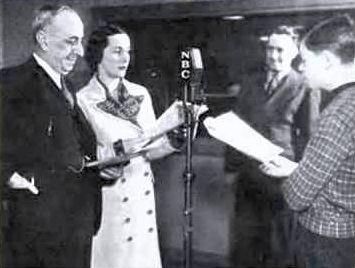 Vic and Sade was a comedy, however. Radio historian (and Radio Spirits scribe) Elizabeth McLeod once observed in an essay:
Vic and Sade was a comedy, however. Radio historian (and Radio Spirits scribe) Elizabeth McLeod once observed in an essay:
There were many other fifteen minute comedy-dialogue shows in its time, and Vic and Sade was nothing like any of them. It never had the compelling, dramatic plots of Amos ‘n’ Andy, or the urbane wit of Easy Aces, or the broad comedy of Lum and Abner. You didn’t tune in Vic and Sade to find out how the characters would get themselves out of a difficult plot wrinkle—Rush was never put on trial for murder, for example, or sued for breach of promise—and you never fell on the floor laughing at the Gook family’s wacky antics.
Vic and Sade wasn’t really about any of these things. In fact, when you really think about it, Vic and Sade wasn’t about anything. It was the original show about nothing.
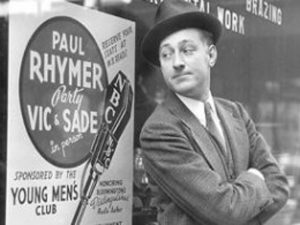 Vic and Sade was the creation of a young NBC continuity writer named Paul Rhymer. Rhymer, born in Fulton, Illinois in 1905, spent most of his childhood in Bloomington—which would become the model for the unidentified town where “the small house halfway up in the next block” was located. Paul attended Illinois Wesleyan University for a brief time, until the passing of his father, then embarked on a series of odd jobs. Rhymer even dabbled as a newspaper reporter for a time, but he indulged in a practice that is generally frowned upon in journalism: he was writing feature stories about people he had neglected to interview. Working for NBC, Paul spent the next three years churning out scripts for various shows until program director Charles Menser asked him to whip up a family skit that was to be auditioned before prospective sponsor Procter & Gamble. This “skit” would eventually become Vic and Sade, and though P&G took a pass, Menser liked the concept enough to put it on the air. (Procter & Gamble would change their mind and sign on to pay the bills in 1934, allowing Paul to leave NBC and be a freelancer from that moment on.)
Vic and Sade was the creation of a young NBC continuity writer named Paul Rhymer. Rhymer, born in Fulton, Illinois in 1905, spent most of his childhood in Bloomington—which would become the model for the unidentified town where “the small house halfway up in the next block” was located. Paul attended Illinois Wesleyan University for a brief time, until the passing of his father, then embarked on a series of odd jobs. Rhymer even dabbled as a newspaper reporter for a time, but he indulged in a practice that is generally frowned upon in journalism: he was writing feature stories about people he had neglected to interview. Working for NBC, Paul spent the next three years churning out scripts for various shows until program director Charles Menser asked him to whip up a family skit that was to be auditioned before prospective sponsor Procter & Gamble. This “skit” would eventually become Vic and Sade, and though P&G took a pass, Menser liked the concept enough to put it on the air. (Procter & Gamble would change their mind and sign on to pay the bills in 1934, allowing Paul to leave NBC and be a freelancer from that moment on.)
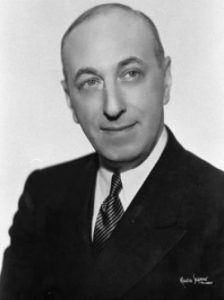 Vic and Sade were the first names of Mr. and Mrs. Victor Rodney Gook, an average, nondescript couple residing in an unnamed rural town located somewhere in Illinois. Vic, portrayed by former grain salesman Art Van Harvey, worked as chief accountant for Consolidated Kitchenware Company’s Plant Number Fourteen—and had married Sade after meeting her in her hometown in Dixon, Illinois. Like most office drones, Vic constantly grumbled about his job and about his boss in particular: J.K. Ruebush (pronounced “Old Rubbish”). After punching the time clock at the end of his workday, Vic would return home to his castle (“Hi-dee-hi, Ho-dee-ho” he’d call out in Cab Calloway fashion) and indulge in his passions of parades, alarm clocks, cigars, etc. Vic was also a lodge member-in-good-standing of the Sacred Stars of the Milky Way, Drowsy Venus Chapter—he was the Exalted Big Dipper.
Vic and Sade were the first names of Mr. and Mrs. Victor Rodney Gook, an average, nondescript couple residing in an unnamed rural town located somewhere in Illinois. Vic, portrayed by former grain salesman Art Van Harvey, worked as chief accountant for Consolidated Kitchenware Company’s Plant Number Fourteen—and had married Sade after meeting her in her hometown in Dixon, Illinois. Like most office drones, Vic constantly grumbled about his job and about his boss in particular: J.K. Ruebush (pronounced “Old Rubbish”). After punching the time clock at the end of his workday, Vic would return home to his castle (“Hi-dee-hi, Ho-dee-ho” he’d call out in Cab Calloway fashion) and indulge in his passions of parades, alarm clocks, cigars, etc. Vic was also a lodge member-in-good-standing of the Sacred Stars of the Milky Way, Drowsy Venus Chapter—he was the Exalted Big Dipper.
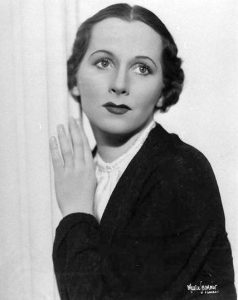 Actress Bernardine Flynn was lured to radio by its career stability and played the part of Sade, Vic’s domestic partner who took great pride in her housekeeping (whipping up kitchen delights like beef punkles ice cream and limberschwartz cheese). But she, too, had outside interests in the form of the Thimble Club—a ladies’ aggregation that met weekly to sew and gossip. Sade’s best bud was Ruthie Stembottom; the two women never missed a washrag sale at Yamilton’s Department Store. Sade was the straight woman on the show, but she’d often give out with statements like, “Somebody knock me over with a feather!” and her endearing catchphrase, “Oh, ish.”
Actress Bernardine Flynn was lured to radio by its career stability and played the part of Sade, Vic’s domestic partner who took great pride in her housekeeping (whipping up kitchen delights like beef punkles ice cream and limberschwartz cheese). But she, too, had outside interests in the form of the Thimble Club—a ladies’ aggregation that met weekly to sew and gossip. Sade’s best bud was Ruthie Stembottom; the two women never missed a washrag sale at Yamilton’s Department Store. Sade was the straight woman on the show, but she’d often give out with statements like, “Somebody knock me over with a feather!” and her endearing catchphrase, “Oh, ish.”
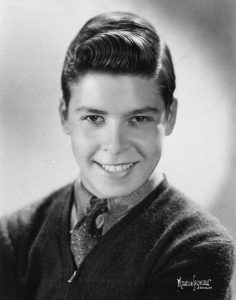 What was so remarkable about Vic and Sade is that the Gooks’ entire existence was established while rarely leaving the confines of their Virginia Avenue residence—the supporting characters in their world were talked about in anecdotes, letters and phone calls. But even Rhymer could detect that this would become limiting and as such, he introduced a third character off-mike on July 8, 1932. This would be nine-year-old Rush, the son of an old school friend of Sade’s who the couple adopted because his mother was unable to take care of him. Billy Idelson made his first on-mike appearance on July 15, and it wasn’t long before listeners simply accepted that Rush was Vic and Sade’s son all along. A good kid who possessed an endearing deadpan innocence, Rush affectionately called his father “Gov” and Vic had an endless supply of nicknames in response—”Pocketwatch,” “Paperweight,” “Horse Chestnut,” etc. (To Sade, Rush was “Willie”—a reference to actor Idleson’s real first name.) Like his parents, we learned about Rush’s friends and acquaintances (Smelly Clark, Blue-Tooth Johnson) through various conversations.
What was so remarkable about Vic and Sade is that the Gooks’ entire existence was established while rarely leaving the confines of their Virginia Avenue residence—the supporting characters in their world were talked about in anecdotes, letters and phone calls. But even Rhymer could detect that this would become limiting and as such, he introduced a third character off-mike on July 8, 1932. This would be nine-year-old Rush, the son of an old school friend of Sade’s who the couple adopted because his mother was unable to take care of him. Billy Idelson made his first on-mike appearance on July 15, and it wasn’t long before listeners simply accepted that Rush was Vic and Sade’s son all along. A good kid who possessed an endearing deadpan innocence, Rush affectionately called his father “Gov” and Vic had an endless supply of nicknames in response—”Pocketwatch,” “Paperweight,” “Horse Chestnut,” etc. (To Sade, Rush was “Willie”—a reference to actor Idleson’s real first name.) Like his parents, we learned about Rush’s friends and acquaintances (Smelly Clark, Blue-Tooth Johnson) through various conversations.
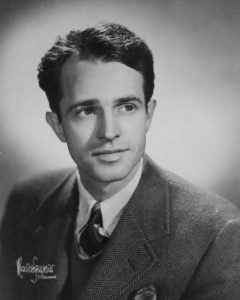 Art Van Harvey suffered a heart attack in 1940. To keep the show running until he recuperated, Paul Rhymer decided to add a fourth character to Vic and Sade: Uncle Fletcher. Often talked about on the program, Fletcher was brought to life by Huntington, WV native Clarence Hartzell as a half-deaf old codger who lived in his own little world. He would often ramble on at length about old acquaintances from places like Sweet Esther, Wisconsin and Dismal Seepage, Ohio. Oblivious to any conversation already in progress, Fletcher would talk right through people and respond to any question asked of him with “Fine.” (When discussing his acquaintances, Uncle Fletcher would invariably conclude his reminiscences with the curt “…later died.”) Uncle Fletcher soon became indispensable to the program, and he remained with the series even after Art Van Harvey’s return. The show underwent another cast change in 1942, when Billy Idelson enlisted in the Navy. The character of Russell Miller, the orphaned nephew of one of Vic’s co-workers at Consolidated Kitchenware (and played by David Whitehouse and Johnny Coons), became a Rush-surrogate on the June 3, 1943 broadcast.
Art Van Harvey suffered a heart attack in 1940. To keep the show running until he recuperated, Paul Rhymer decided to add a fourth character to Vic and Sade: Uncle Fletcher. Often talked about on the program, Fletcher was brought to life by Huntington, WV native Clarence Hartzell as a half-deaf old codger who lived in his own little world. He would often ramble on at length about old acquaintances from places like Sweet Esther, Wisconsin and Dismal Seepage, Ohio. Oblivious to any conversation already in progress, Fletcher would talk right through people and respond to any question asked of him with “Fine.” (When discussing his acquaintances, Uncle Fletcher would invariably conclude his reminiscences with the curt “…later died.”) Uncle Fletcher soon became indispensable to the program, and he remained with the series even after Art Van Harvey’s return. The show underwent another cast change in 1942, when Billy Idelson enlisted in the Navy. The character of Russell Miller, the orphaned nephew of one of Vic’s co-workers at Consolidated Kitchenware (and played by David Whitehouse and Johnny Coons), became a Rush-surrogate on the June 3, 1943 broadcast.
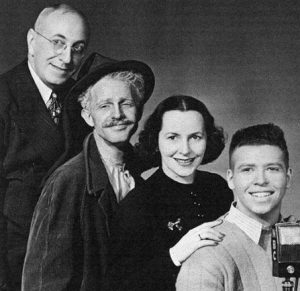 Vic and Sade vacated the airwaves on September 29, 1944. It returned on August 21, 1945 and ran until December 7, 1945, and then did a brief summer stint (sponsored by Fitch Shampoo) as a half-hour comedy program from June to October 1946. The program later took a shot at a couple of small screen runs (in 1949 and 1957). About 300 transcriptions of the show have survived to entertain a new generation of audiences, but Vic and Sade is also at the center of one of the true tragic stories of old-time radio preservation. The show’s longtime sponsor, Procter & Gamble, destroyed close to 3,000 recorded transcription discs of the program shortly after WWII. John Dunning, author of On the Air: The Encyclopedia of Old-Time Radio, summed up the feelings of Vic and Sade fans: “All we can do at this late date is hope that the space formerly used to house those wonderful transcriptions made some indifferent company bureaucrat a comfortable office.” The written record is another matter entirely. In the 1970s, the efforts of Paul Rhymer and his wife resulted in two book collections of Vic and Sade scripts featuring forewords from Ray Bradbury and Jean Shepherd.
Vic and Sade vacated the airwaves on September 29, 1944. It returned on August 21, 1945 and ran until December 7, 1945, and then did a brief summer stint (sponsored by Fitch Shampoo) as a half-hour comedy program from June to October 1946. The program later took a shot at a couple of small screen runs (in 1949 and 1957). About 300 transcriptions of the show have survived to entertain a new generation of audiences, but Vic and Sade is also at the center of one of the true tragic stories of old-time radio preservation. The show’s longtime sponsor, Procter & Gamble, destroyed close to 3,000 recorded transcription discs of the program shortly after WWII. John Dunning, author of On the Air: The Encyclopedia of Old-Time Radio, summed up the feelings of Vic and Sade fans: “All we can do at this late date is hope that the space formerly used to house those wonderful transcriptions made some indifferent company bureaucrat a comfortable office.” The written record is another matter entirely. In the 1970s, the efforts of Paul Rhymer and his wife resulted in two book collections of Vic and Sade scripts featuring forewords from Ray Bradbury and Jean Shepherd.
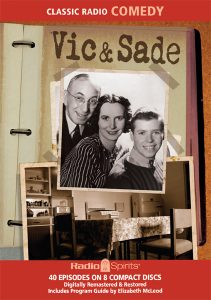 Bradbury and Shepherd were not the only fans of the series. Admirers of Vic and Sade included James Thurber, Ogden Nash, Sherwood Anderson, President Franklin D. Roosevelt, and Fibber McGee & Molly’s Jim and Marian Jordan—two individuals who knew a thing or two about life in Illinois. We’ll wager that we’ll be adding your name to this list, too, once you check out our collection of Vic and Sade shows. You’ll even find the couple on our potpourri set of Great Radio Sitcoms! Don’t just sit there with your teeth in your mouth—order these sets today!
Bradbury and Shepherd were not the only fans of the series. Admirers of Vic and Sade included James Thurber, Ogden Nash, Sherwood Anderson, President Franklin D. Roosevelt, and Fibber McGee & Molly’s Jim and Marian Jordan—two individuals who knew a thing or two about life in Illinois. We’ll wager that we’ll be adding your name to this list, too, once you check out our collection of Vic and Sade shows. You’ll even find the couple on our potpourri set of Great Radio Sitcoms! Don’t just sit there with your teeth in your mouth—order these sets today!

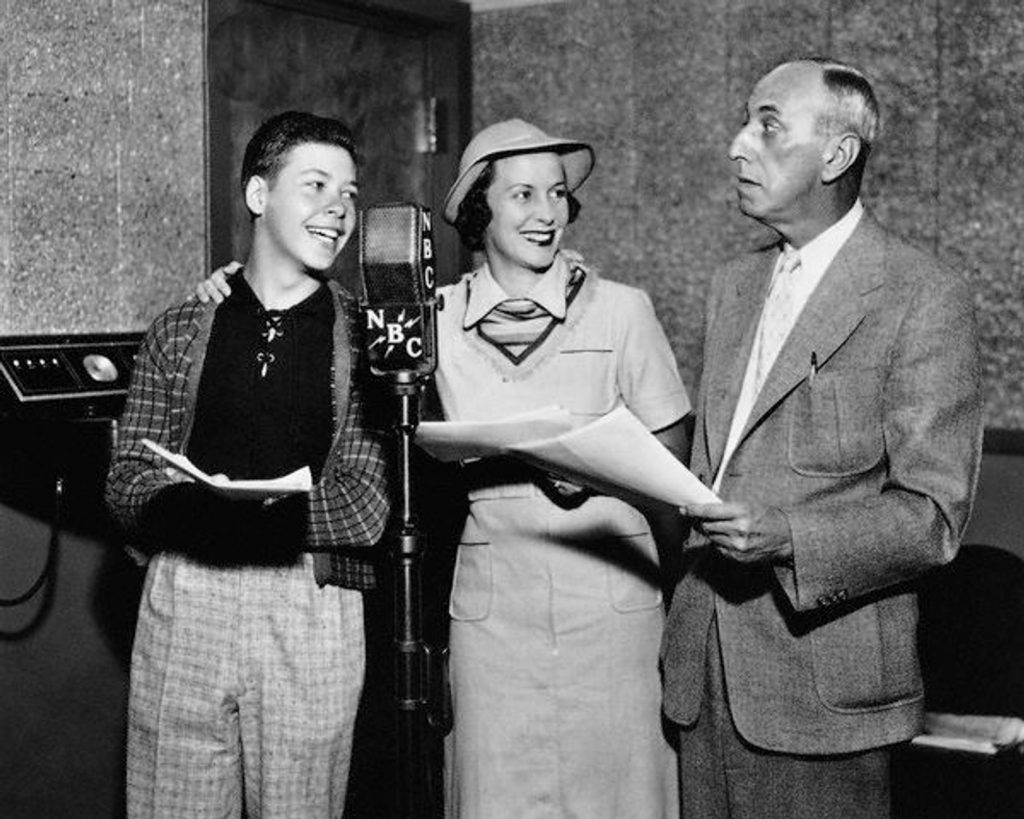

Former “When Radio Was” host Stan Freberg had a great name for fans of this show (of which he was one): “Vic and Sadists.”
Very well put!